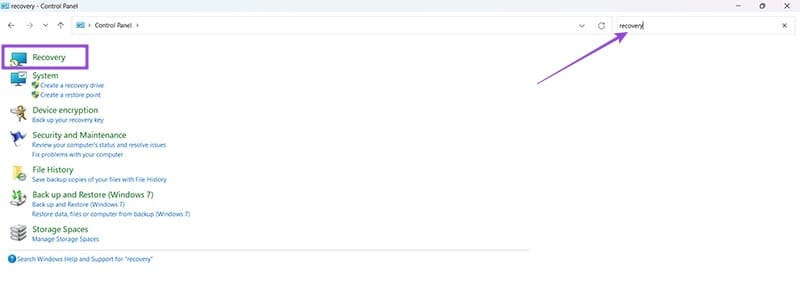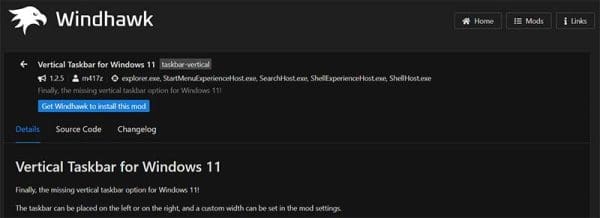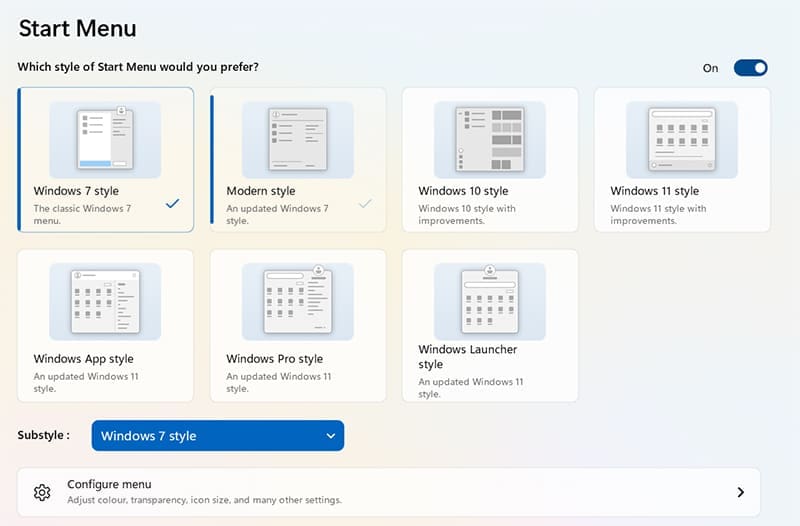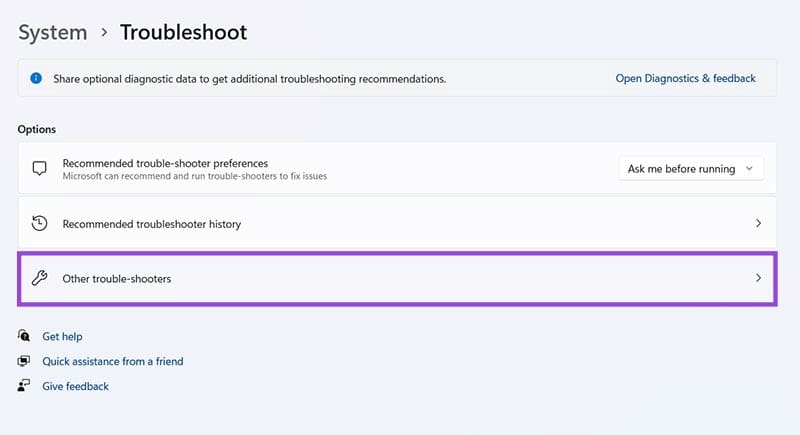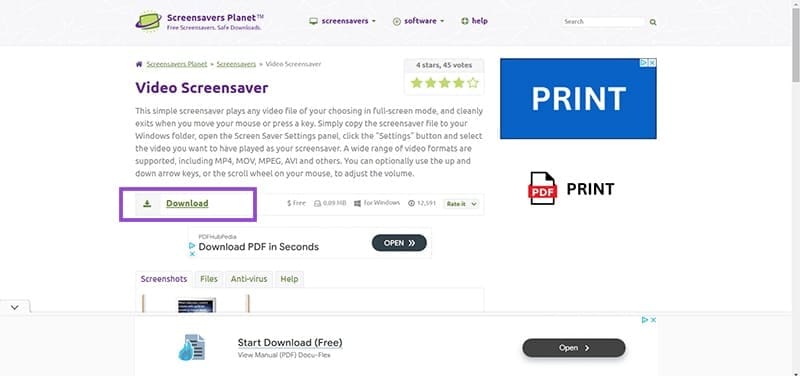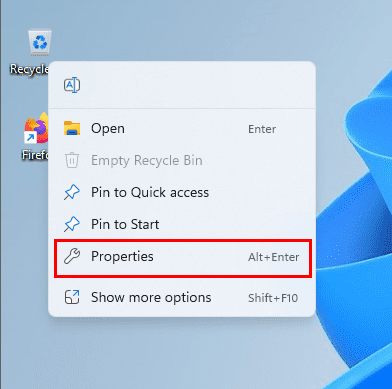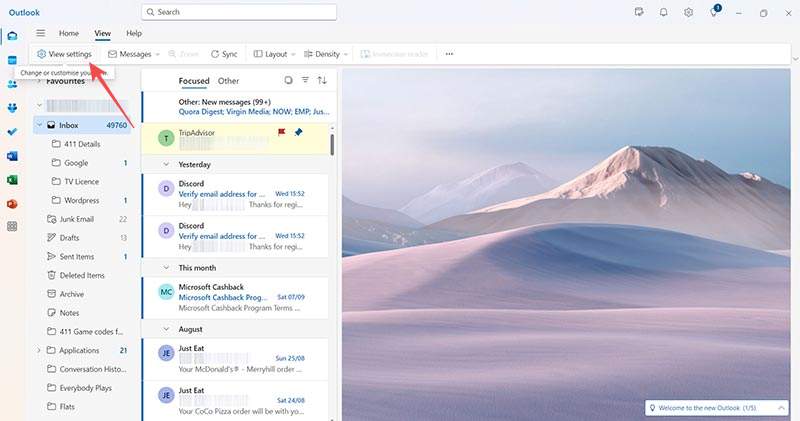Google Play: So löschen Sie die App-Download-Historie

Löschen Sie die App-Download-Historie auf Google Play für einen Neuanfang. Hier sind die schrittweisen Anleitungen für Anfänger.

Windows-Updates sind seit den Tagen von Windows XP für viele Benutzer ein notorisches Ärgernis. Glücklicherweise hat sich die Bereitstellung von Windows-Updates in den letzten Jahren drastisch verbessert und nur sehr wenige Feature-Updates verursachen heutzutage größere Probleme .
Sie können Windows so konfigurieren, dass es automatisch im Hintergrund heruntergeladen und aktualisiert wird und es sogar während Ihrer inaktiven Stunden neu gestartet wird. All dies ist großartig, aber was ist, wenn ein Update installiert wird, das Sie nicht benötigen? Oder was ist, wenn Sie ein Update erhalten, das die Leistung Ihres Computers beeinträchtigt ? Nun, in diesem Fall können Sie Windows-Updates in Windows 11 deinstallieren . Hier sind jedoch einige Dinge, die Sie beachten sollten, bevor Sie Updates von Ihrem Windows 11-PC deinstallieren.
Verwandte: So deaktivieren Sie Updates unter Windows 11
Inhalt
Warum Windows-Updates deinstallieren?
Es kann mehrere Gründe geben, warum Sie Windows-Updates deinstallieren möchten. Hier sind einige der häufigsten. Wenn Sie nach einem kürzlich durchgeführten Windows-Update Fehler beheben, können Sie auch diese Liste durchgehen.
Falls auf Ihrem System solche Probleme auftreten, können Sie versuchen, das neueste Windows-Update zu deinstallieren, um Ihr Problem zu beheben.
und mehr. Bei der Installation eines neuen Updates für Windows 11 können viele Probleme auftreten, insbesondere wenn Sie den Beta- oder Insider-Kanal abonniert haben. In solchen Fällen können Sie versuchen, das betreffende Update mithilfe der Anleitung in diesem Beitrag zu deinstallieren.
Verwandte: So stornieren Sie ein ausstehendes Windows Insider-Update
Ist es sicher, Windows-Updates zu deinstallieren?
Ja, solange Sie Windows-Updates nicht manuell entfernen oder ein veraltetes Dienstprogramm verwenden, sollten Sie sicher sein, Windows-Updates von Ihrem System zu deinstallieren. Beachten Sie jedoch, dass Microsoft Windows-Updates verwendet, um Sicherheitspatches, Hotfixes und mehr bereitzustellen, um Ihr System vor den neuesten Bedrohungen und Sicherheitslücken zu schützen.
Durch das Entfernen von Windows-Updates werden auch solche Patches deinstalliert, was wiederum Ihr System anfällig für Online-Bedrohungen macht. Dies ist insbesondere dann der Fall, wenn Sie aktuelle Sicherheitsupdates deinstallieren möchten.
Daher wird empfohlen, dass Sie Ihre Änderungen rückgängig machen, sobald der Fehler behoben ist, auch wenn Sie ein Update sicher deinstallieren können. Wenn Ihr Fehler oder Fehler nach der Neuinstallation des Updates weiterhin besteht, können Sie warten, bis ein nachfolgendes Update und Fix von Microsoft veröffentlicht wird.
Verwandte: So entfernen Sie Bing von Windows 11
So finden Sie die Updates, die Sie entfernen möchten
Wir können Updates mit verschiedenen Methoden entfernen, aber um herauszufinden, welches Update Sie entfernen möchten, müssen Sie es auf Ihrem PC identifizieren. Jedem Microsoft-Update wird eine KB-Nummer zugewiesen, die hilft, das Update auf Verbraucher-PCs sowie auf den Servern von Microsoft zu ermitteln und zu identifizieren. Wir können diese Nummer zu unserem Vorteil nutzen und das betreffende Update mithilfe einer der folgenden Anleitungen von Ihrem System entfernen. So können Sie die neuesten auf Ihrem PC installierten Windows-Updates identifizieren.
Methode #01: Verwenden von Einstellungen
Drücken Sie Windows + iauf Ihrer Tastatur und wählen Sie links „Windows Update“.
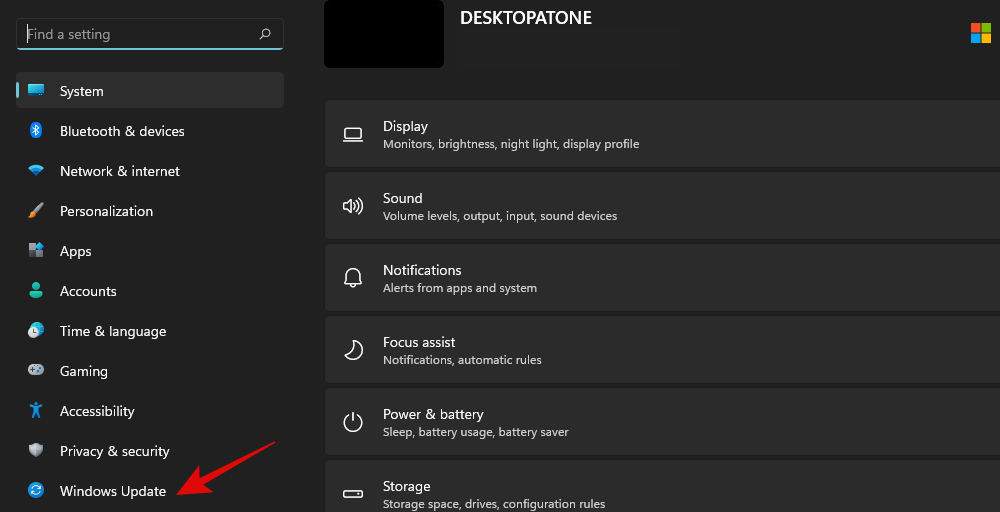
Klicken Sie jetzt auf "Verlauf aktualisieren".
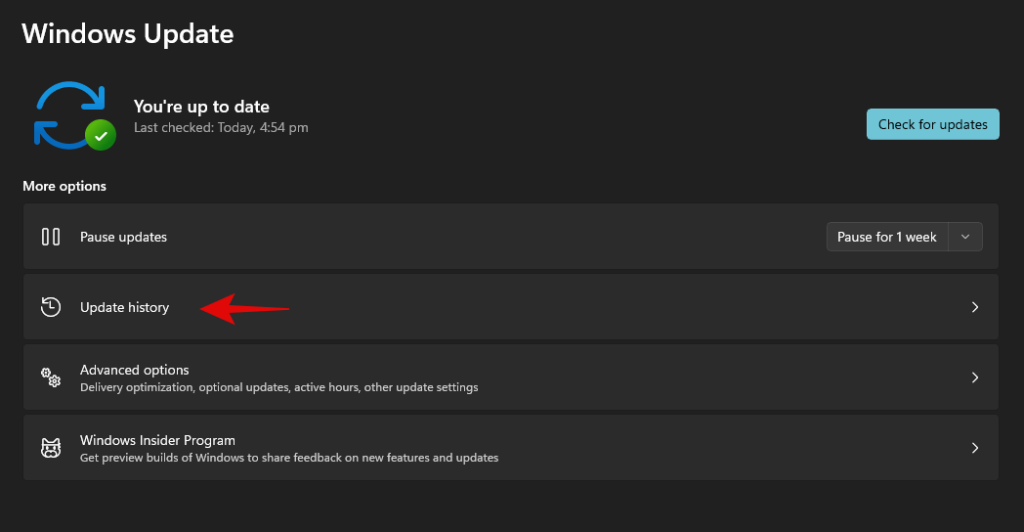
Sie erhalten nun eine Liste der kürzlich auf Ihrem System installierten Windows-Updates.
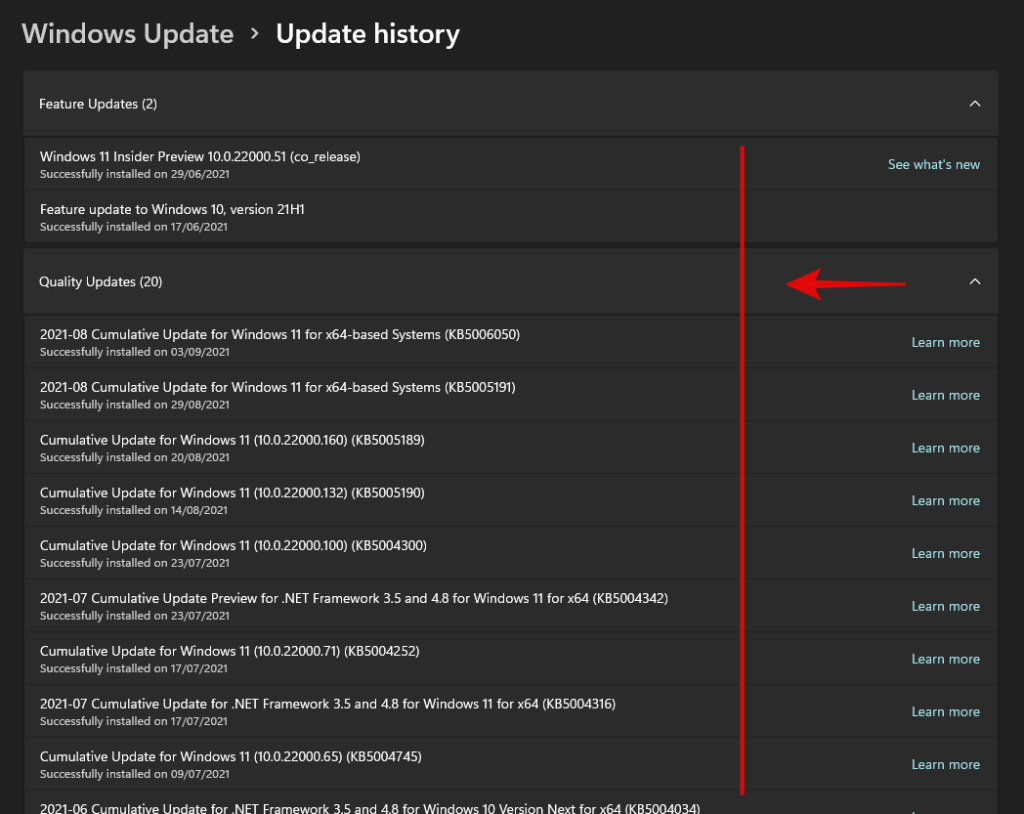
Notieren Sie sich einfach die KB-Nummer des Updates, das Sie von Ihrem PC entfernen möchten.
Methode #02: Verwenden von CMD
Drücken Sie Windows + Sauf Ihrer Tastatur und suchen Sie nach CMD. Klicken Sie auf „Als Administrator ausführen“, sobald die App in Ihren Suchergebnissen angezeigt wird.
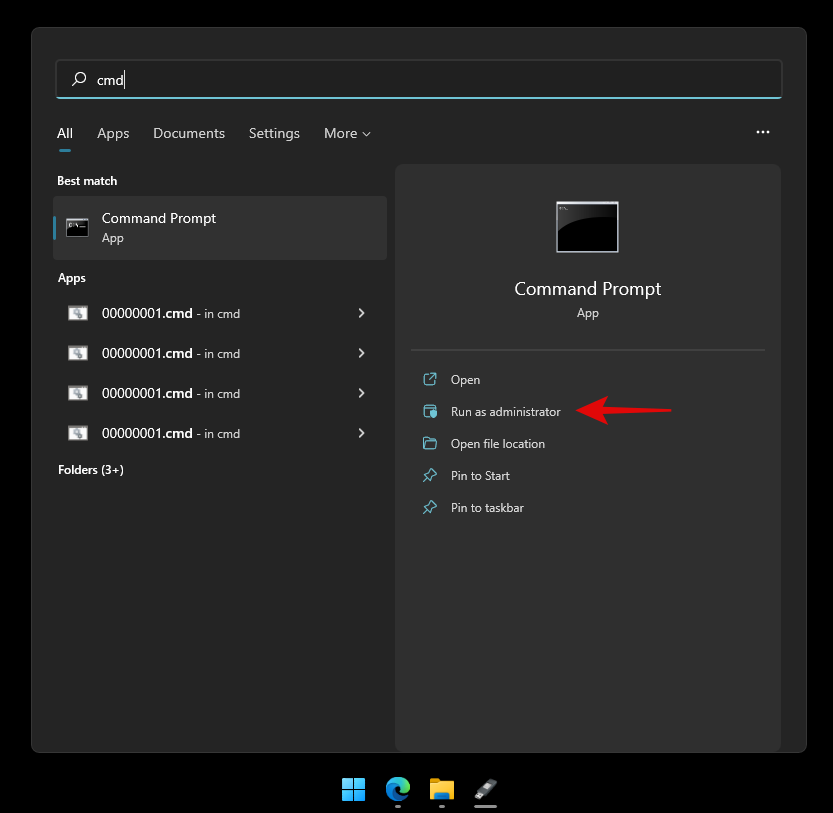
Geben Sie den folgenden Befehl ein und drücken Sie die Eingabetaste auf Ihrer Tastatur.
wmic qfe list brief /format:table
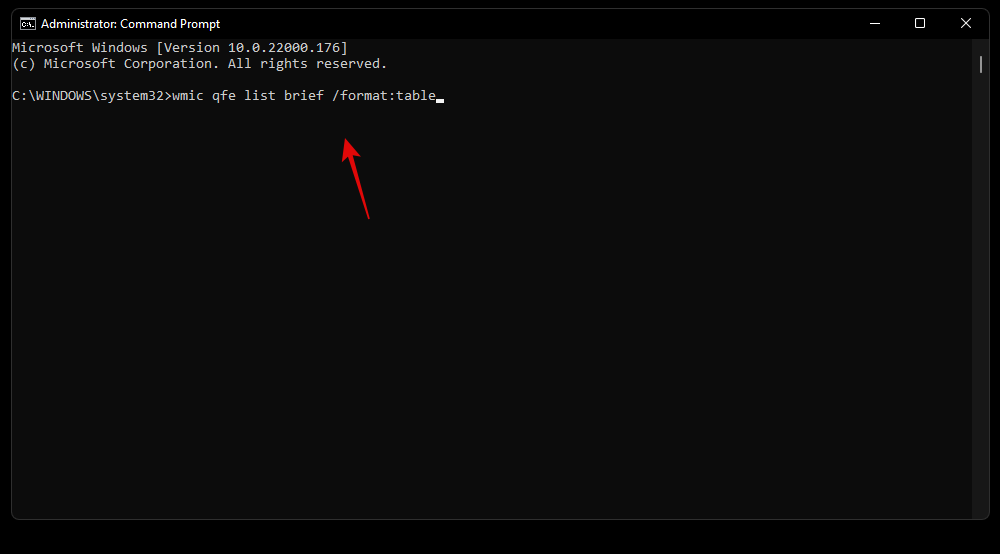
Sie erhalten nun eine Liste aller zuletzt auf Ihrem PC installierten Windows-Updates. Klicken und erweitern Sie die betreffende Kategorie aus der Liste unten.
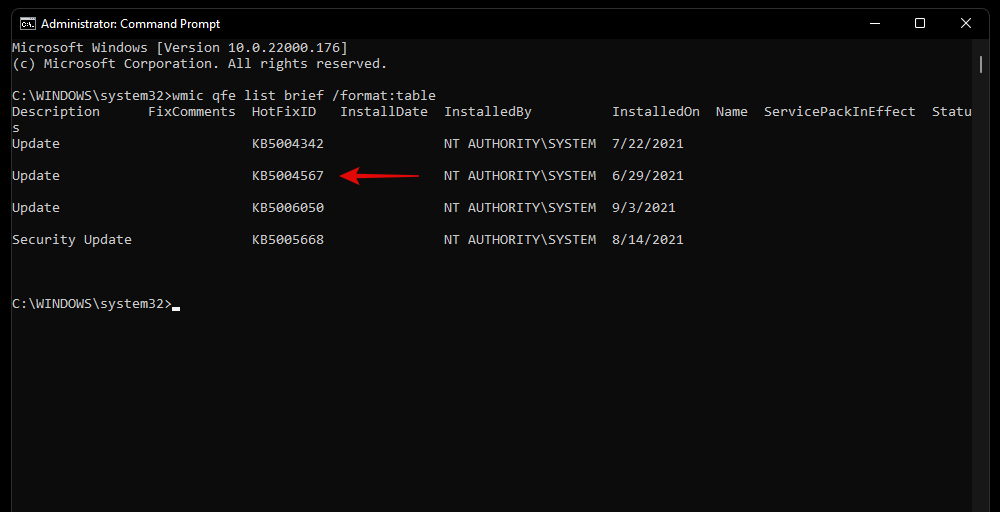
Identifizieren Sie das Update, das Sie entfernen möchten, und notieren Sie seine 'HotFixID'. Wir verwenden diese ID, um das betreffende Update mithilfe der folgenden Anleitung zu entfernen.
So entfernen Sie Windows-Updates von Ihrem PC
Sie können Windows-Updates mit einer der folgenden Methoden von Ihrem PC entfernen. Wenn Sie von Windows gesperrt sind oder Ihren Desktop nicht starten können, empfehlen wir die Verwendung der Windows RE-Methode oder der CMD-Methode. Wenn Sie auf Ihren Desktop zugreifen können, können Sie mit der App Einstellungen ganz einfach Updates von Ihrem System entfernen. Verwenden Sie die folgenden Anleitungen, um je nach Ihren Vorlieben zu beginnen.
Methode #01: Verwenden von Einstellungen
Drücken Sie Windows + iauf Ihrer Tastatur und klicken Sie in der linken Seitenleiste auf „Windows Update“.

Klicken Sie auf „Verlauf aktualisieren“.

Scrollen Sie nach unten und klicken Sie auf „Updates deinstallieren“.

Sie werden nun zur Systemsteuerung weitergeleitet, wo Sie eine Liste der letzten Updates finden, die von Ihrem System entfernt werden können.

Wählen Sie das Update aus, das Sie entfernen möchten, und klicken Sie oben auf „Deinstallieren“.

Folgen Sie den Anweisungen auf dem Bildschirm, um das betreffende Update von Ihrem PC zu deinstallieren.

Sie können Ihren PC jetzt neu starten und alle Probleme, die Sie aufgrund des Updates hatten, sollten jetzt behoben sein.
Methode #02: Verwenden der Windows-Update-Problembehandlung
Drücken Sie Windows + iauf Ihrer Tastatur und klicken Sie auf „Fehlerbehebung“.
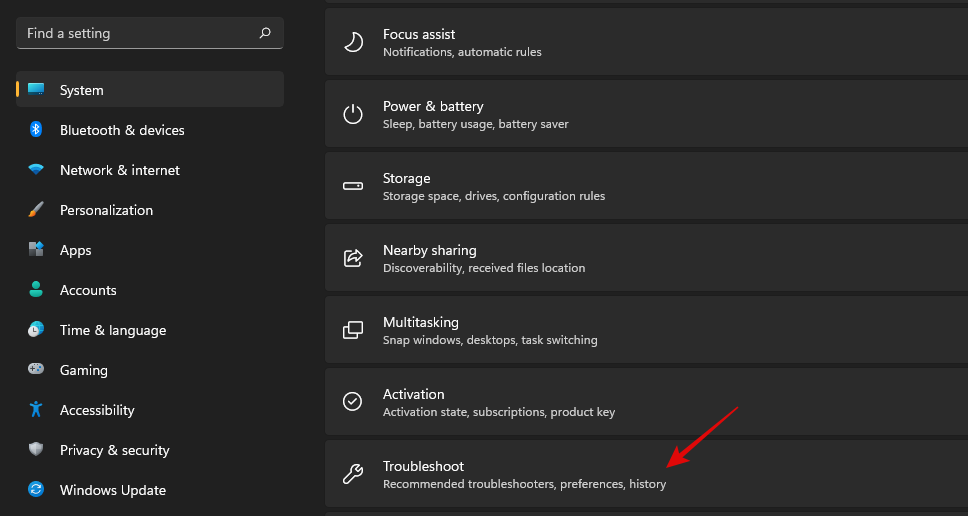
Klicken Sie auf „Andere Fehlerbehebungen“.
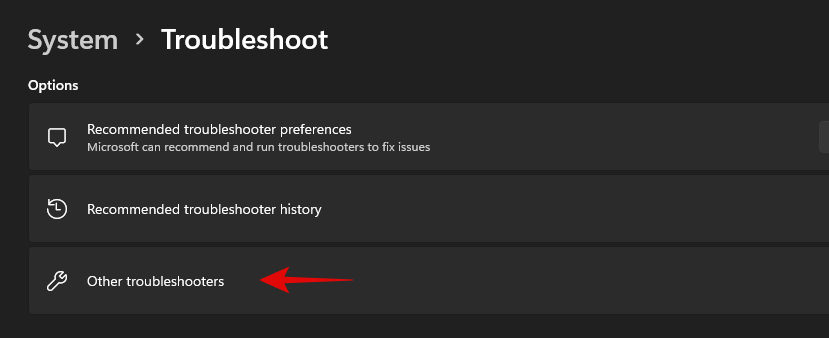
Klicken Sie neben Windows Update auf "Ausführen".
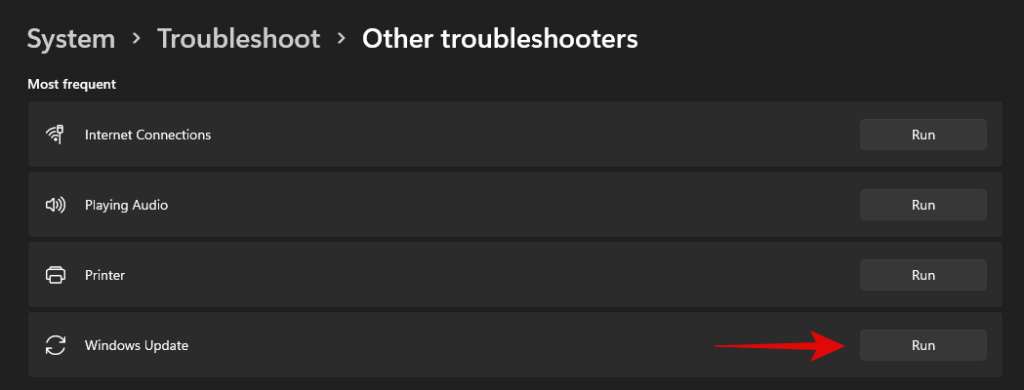
Die Windows-Problembehandlung sucht nun nach Problemen mit und verursacht durch Windows-Updates auf Ihrem PC. Wenn welche gefunden werden, wird die Problembehandlung das Problem automatisch beheben. Wenn festgestellt wird, dass ein aktuelles Update der Schuldige ist, bietet Ihnen die Problembehandlung die Möglichkeit, das erforderliche Windows-Update auszuwählen und zu deinstallieren. Befolgen Sie die nachfolgenden Anweisungen auf dem Bildschirm, um das Update vollständig zu entfernen.
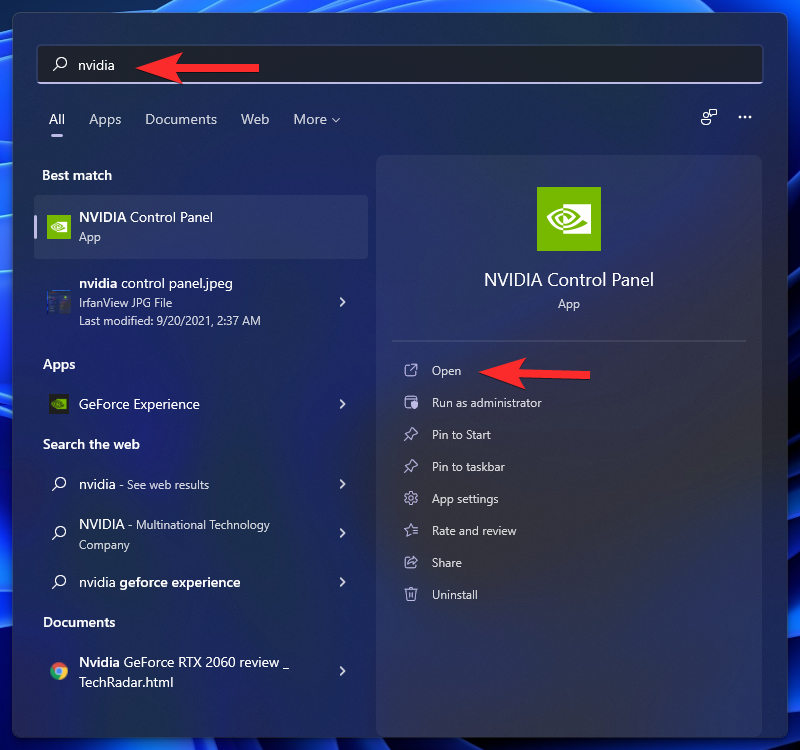
Wenn Sie fertig sind, klicken Sie auf „Schließen“.
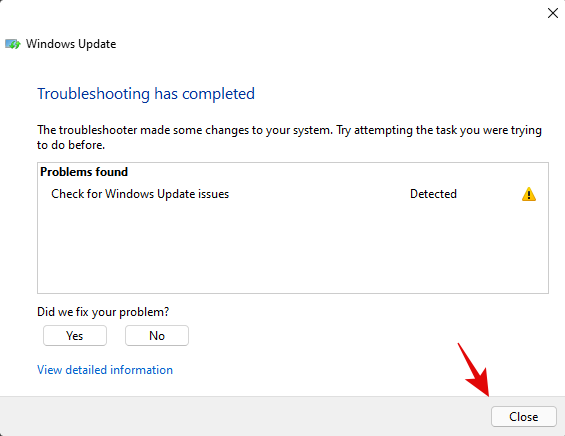
Starten Sie Ihren PC zur Sicherheit neu und das Problem sollte jetzt an dieser Stelle behoben sein. Wenn nicht, können Sie die PowerShell-Methode unten verwenden, um das gewünschte Windows Update manuell von Ihrem System zu deinstallieren.
Methode #03: Verwenden von PowerShell oder CMD
Drücken Sie Windows + Sauf Ihrer Tastatur und suchen Sie nach PowerShell. Klicken Sie auf „Als Administrator ausführen“, sobald die App in Ihren Suchergebnissen angezeigt wird.
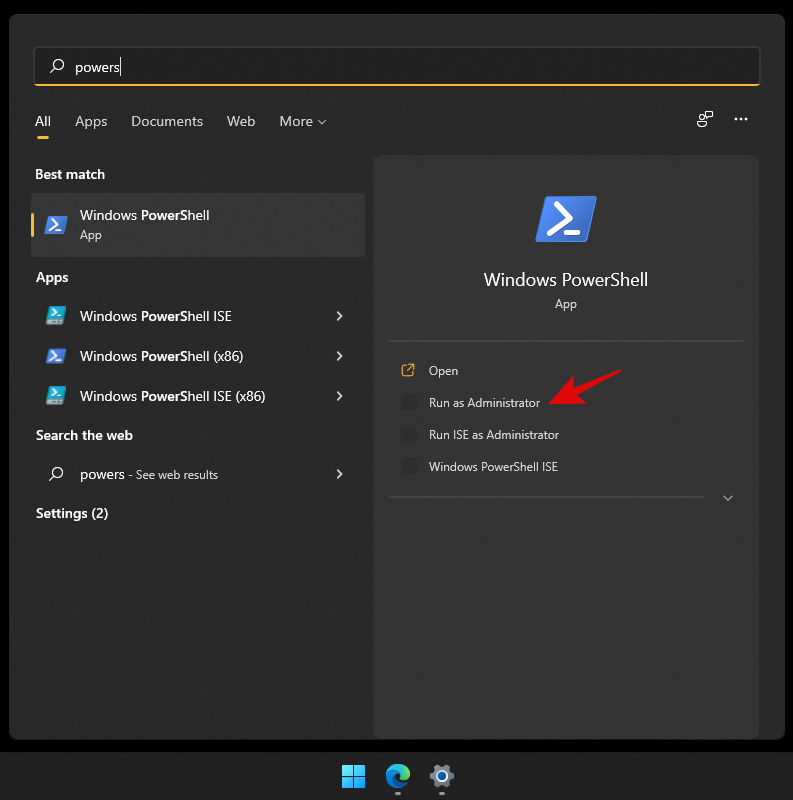
Type in the following command and press Enter on your keyboard to execute it.
wmic qfe list brief /format:table

You will now get a list of all the recently installed Windows Updates on your system in a table format. Note down the KB number for the selected Windows Update.
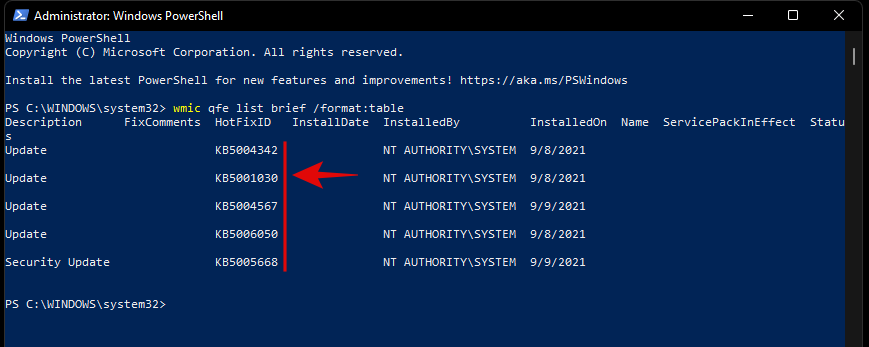
Note: You only need the number and not the letters before it.
Once done, type in the command below and execute it. Replace ‘NUMBER’ with the KB number you noted down earlier.
wusa /uninstall /kb:NUMBER
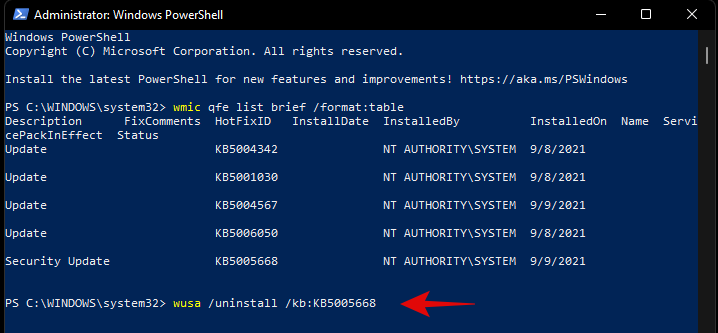
Once prompted, confirm your choice.
If prompted for a restart, we recommend you restart your system at the earliest while saving your work in the background.
If however, you do not wish to receive confirmations before uninstallation and a restart, then you can use the command below.
wusa /uninstall /kb:NUMBER /quiet

While the command above won’t prompt for confirmations, it will wait for your apps to shut down normally in the background. If you are looking to force close your apps and restart your system immediately, then you can use the command given below.
wusa /uninstall /kb:NUMBER /quiet /forcerestart
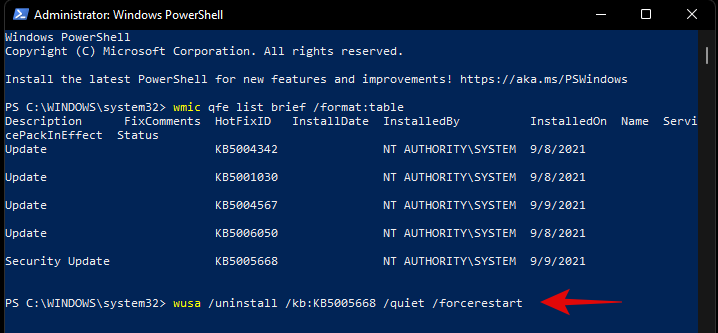
Subsequently, if you only wish to confirm a restart, then you can use the command below.
wusa /uninstall /kb:NUMBER /quiet /promptrestart

And that’s it! The problematic Windows Update should now be uninstalled from your PC.
Method #04: From Windows RE
Windows Recovery Environment also allows you to uninstall conflicting updates. Use the guide below to get you started. If you are facing a BSOD and are already in the Recovery Environment, then you can skip the first few steps of this guide.
Press Windows + i on your keyboard and select Windows Update from your left.
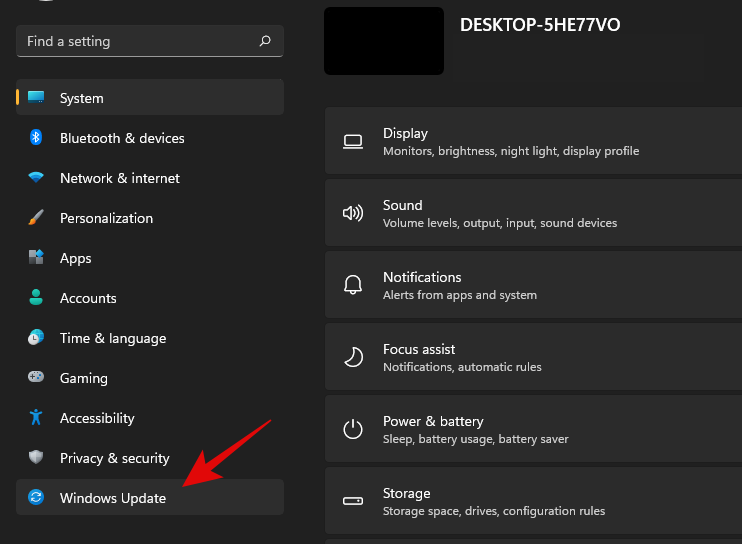
Click on ‘Advanced options’ now.
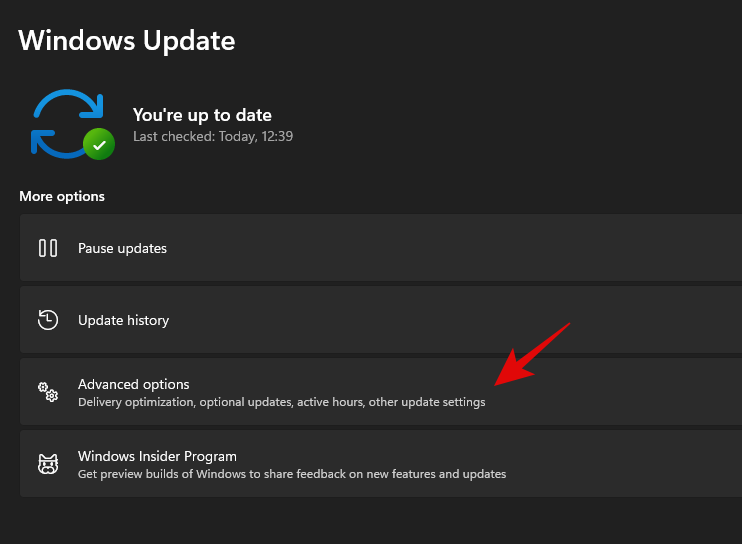
Select ‘Recovery’.
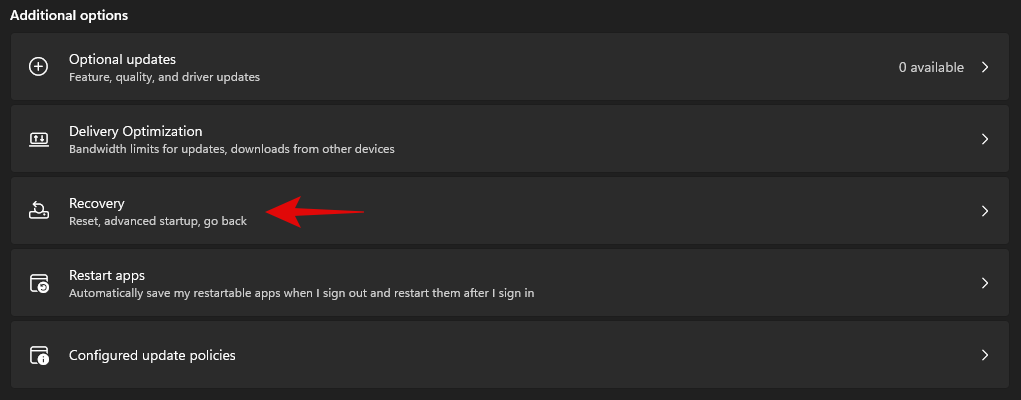
Click on ‘Restart now’ beside Advanced Startup.

You will now boot into the recovery environment. Click on ‘Troubleshoot’.
Now click on ‘Advanced Options’.
Select ‘Uninstall updates’.
Click and select the type of update you wish to install from the options on your screen.
Note: In case you are confused, feature updates refer to major updates to your Windows system that include new features, updated integrations, and sometimes new UI. Quality updates on the other hand encompass everything else including Security updates, Driver updates, Intelligence updates, Telemetry updates, and more.
Click on your administrator account and log in with your password.
Click on ‘Uninstall quality/feature’ update to confirm your choice.
Click on ‘Done’ once the process finishes.
Restart your PC and boot into Windows normally. You shouldn’t face any more issues caused by a problematic Windows update.
Method #05: Using DISM
DISM or Deployment Image Servicing and Management tool is an administrative tool within Windows that helps repair your Windows image and even mount images if needed. DISM supports image formats like .wim, .vhd, and more.
The tool can help you fix issues with your Windows installation and even remove problematic Windows updates. If you are looking to remove windows updates using DISM, then you can follow the steps below to get you started.
Note: DISM can be accessed via CMD and thus, you can use this guide from a recovery environment or an installation media as well. Follow the guide above to get CMD working on your lock screen or within Windows Recovery Environment.
Launch CMD and type in the following command. Press Enter on your keyboard once you are done.
dism /online /get-packages /format:table
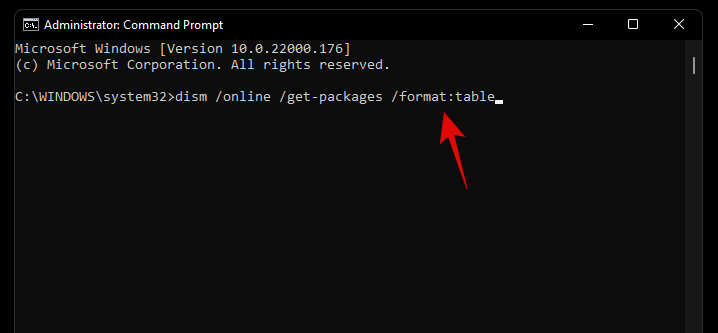
Unlike the WUSA commands we used earlier with PowerShell and CMD, you will need to note down the entire name of the Windows Update package we need to remove. Unfortunately, this includes special characters, spaces, and everything else included in the name. Thankfully you can easily copy the entire name to your clipboard by selecting it with your mouse and then using the keyboard shortcut. Once done, type in the command below and replace NAME with the package name you noted down earlier.
Note: This includes the term ‘Package_for_’ prefixed before some updates.
dism /online /Remove-Package /PackageName:NAME

The selected Windows Update will now be uninstalled from your system. In some cases, you will be prompted to restart your system, type in ‘Y’, and hit Enter on your keyboard to restart your system immediately.
How to stop receiving an update
While removing an update can help you, this does not mean that the broken Windows Update will stop showing up in your Updates section. This can be annoying and if you have automatic updates then you run the risk of automatically installing the problematic update in the background. In all such cases, you can try blocking Windows Updates on your system using the guides below depending on your preferences.
Method #01: Stop OEM driver updates through Windows update
OEM driver updates are delivered through Windows updates as well depending on their importance. Security vulnerabilities and bugs that have been recently found in components like CPU, GPU, or your wireless card, are instantly patched through such updates.
However, if you do not wish to install an OEM driver update provided by Windows update, then you can follow the guide below to block your OEM driver updates.
Press Windows + S on your keyboard and search for ‘Change device installation settings’. Click and launch the app from your search results.
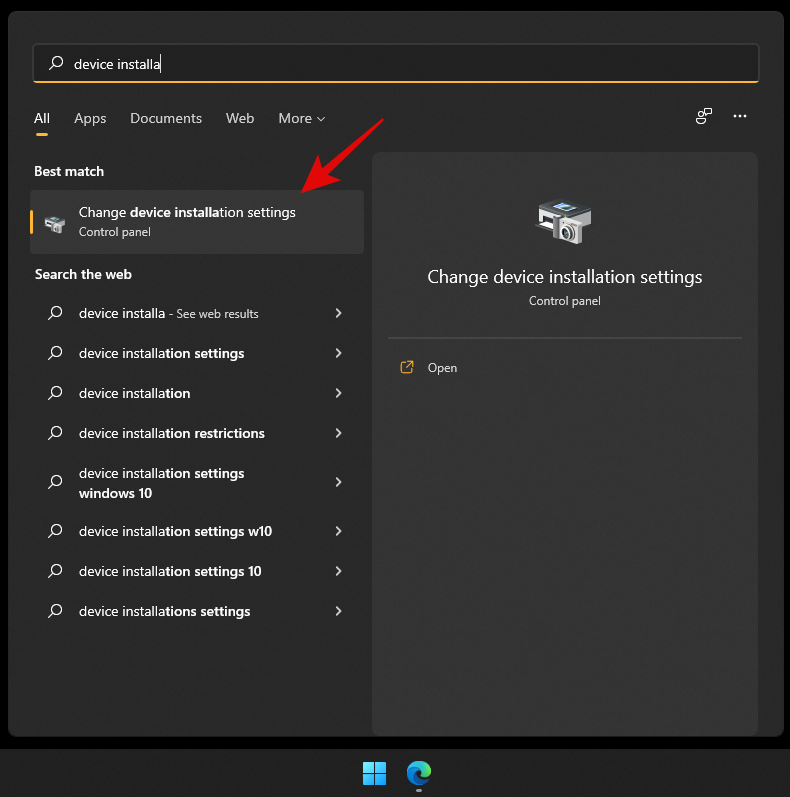
Select ‘No’.

Click on ‘Save changes’.
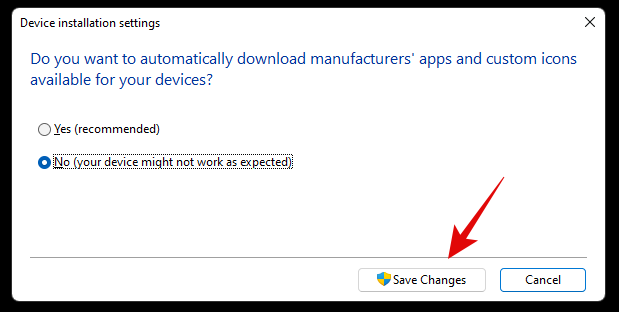
The changes will now be saved and you will no longer receive OEM driver updates through Windows Update.
Related: 6 Ways to Update Drivers on Windows 11
Method #02: Stop updates for Microsoft products
If you have been receiving constant updates for new Microsoft features and old products that keep messing up your system, then you can use the guide below to disable updates for Microsoft products via Windows Update.
Press Windows + i on your keyboard to open the Settings app and select ‘Windows Update’ from the left sidebar.

Click on ‘Advanced options’.

Now turn off the toggle for ‘Receive updates for other Microsoft products’ at the top.

You will no longer receive updates for Microsoft products installed on your system via Windows update.
Method #03: Change active hours for background download and installation for updates
If you’re just looking to dismiss updates so that they don’t interfere with your work hours, then this is the perfect option for you. You can decide when Windows can download and update your PC in the background which will prevent Windows from interfering with your work hours. Follow the guide below to get you started.
Press Windows + i on your keyboard and click on ‘Windows Update’ on your left.

Click on ‘Advanced options’.

Now turn off the toggle for ‘Get me up to date’.
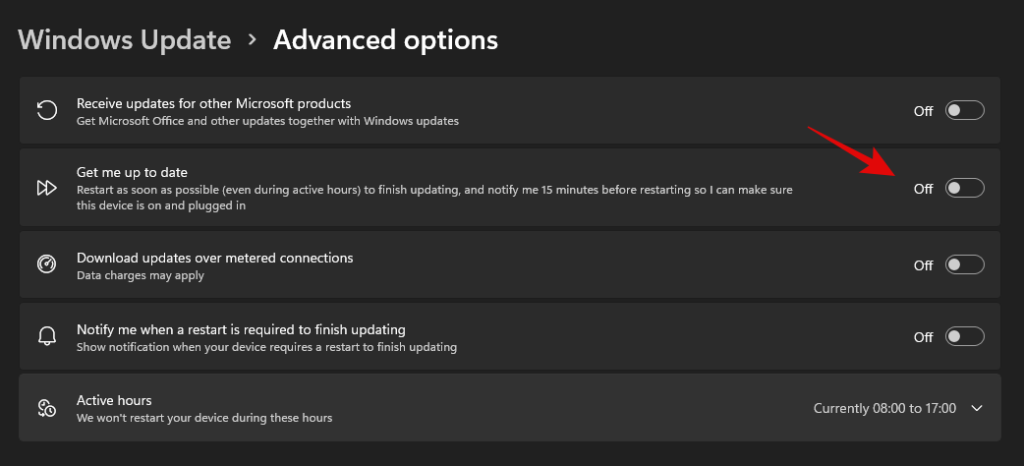
Click on ‘Active hours’.

Click on the drop-down menu and select ‘Manually’.

Define your desired start and end time. Windows won’t download updates and restart your PC during these hours.

And that’s it! Active hours should now be enabled for your system.
Method #04: Block Windows updates that you never wish to install
If you are receiving forced Windows updates that you don’t ever wish to install on your system then you can use a dedicated Windows troubleshooter to solve your issue.
This can be helpful in case you are trying to stop an update that disables a certain feature on your system that you don’t want disabled. This could be access to voltage controls, clock speed controls, turbo controls, fan controls, RGB control, and more. Follow the guide below to get you started.
Download the Windows Update Show Hide troubleshooter using the link above and launch it on your PC. Click on ‘Advanced’.

Uncheck the option for ‘Apply repairs automatically’.
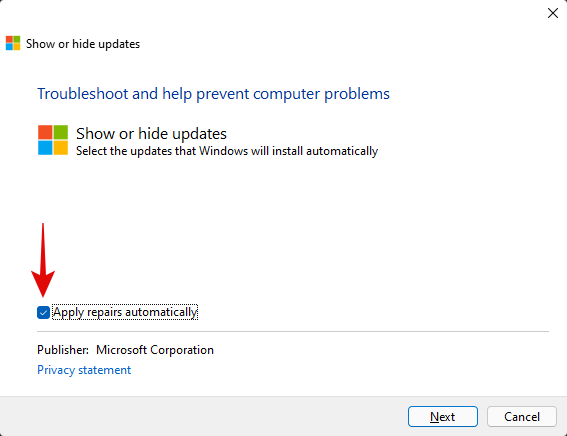
Click on ‘Next’.
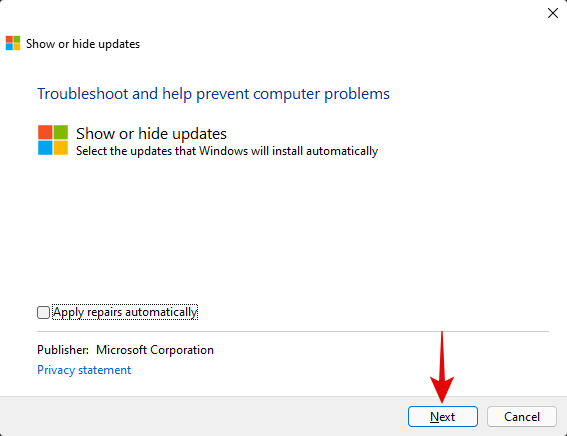
The troubleshooter will now look for pending updates and display them on your screen. Click on ‘Hide updates’.
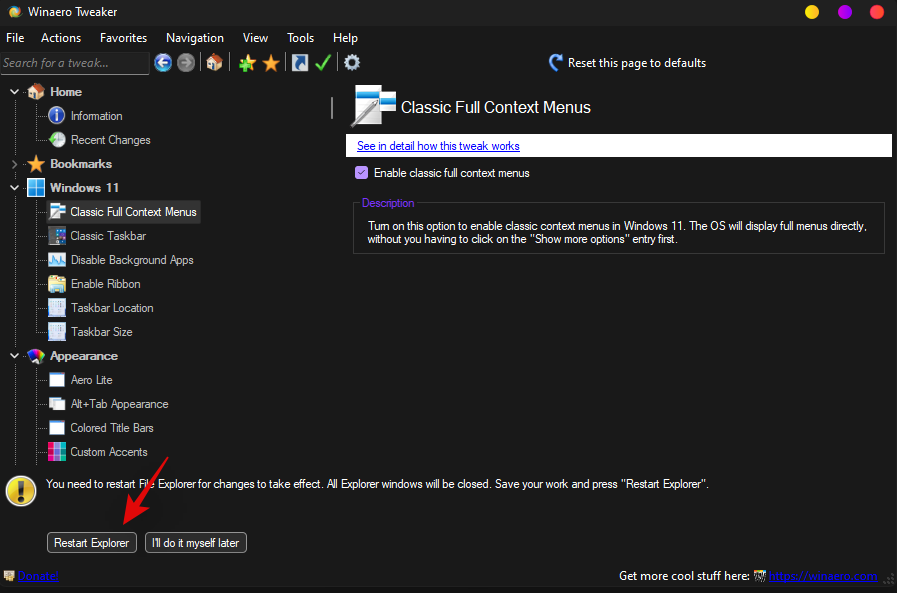
Check the boxes for all the updates you don’t wish to receive on your PC.

Click on ‘Next’.
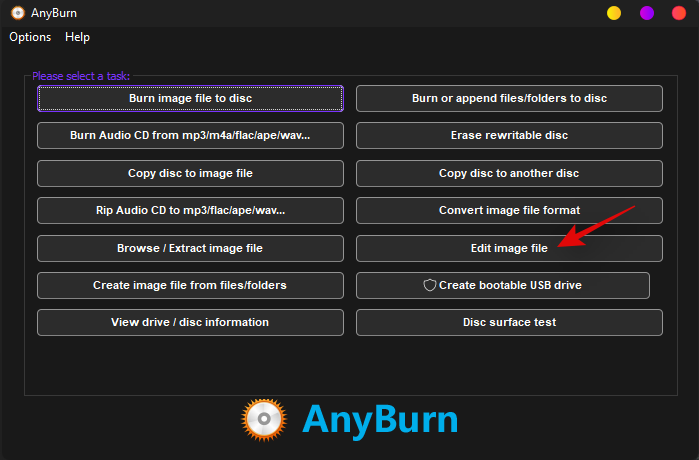
Ensure that ‘Hide updates’ is selected and click on ‘Next’.
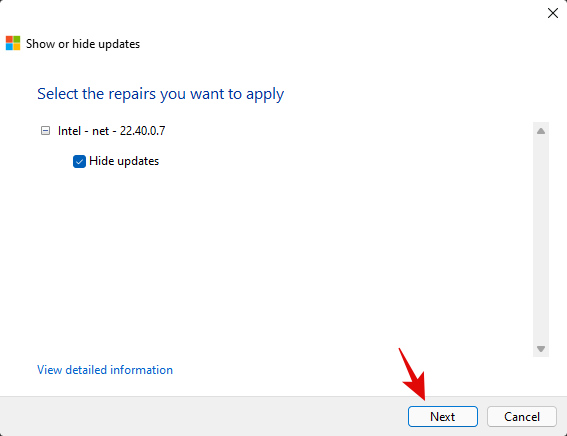
The troubleshooter will now hide the necessary Windows updates from your PC which in turn will prevent them from ever being downloaded on your PC. Click on ‘Close’.

And that’s it! You will now have blocked the necessary updates on Windows 11.
Can you turn off Windows updates?
Yes, you can use certain workarounds and tricks to disable Windows updates on your PC. However, this isn’t recommended as you will lose out on important security patches which would leave you vulnerable to online threats including hackers, malware, adware, and more.
Hence we recommend you keep your PC updated or at least opt to install the latest security updates on your PC. Even if you are losing out on features it’s usually because of a hardware security vulnerability that would compromise your system.
However, if you still wish to disable Windows Updates on your PC, you can use this dedicated guide from us. If you face any issues, feel free to drop a comment.
Can’t uninstall Windows updates? Try these fixes!
If you are unable to install updates on your PC, then you can try the following fixes. However, if you are still unable to uninstall updates then this might indicate an issue with your Windows installation in which case resetting your PC might be the best option.
Follow the guides below to get you started.
Method #01: Reset Windows components and try again
If you have been unable to uninstall updates then you can try resetting your windows components. This will help fix corrupted system files in the background that might be preventing you from uninstalling updates on your system. We will be using a modified script from Mircosoft to help reset all components of Windows 11. The script was originally developed for Windows 10 or higher and hence will need some edits to work properly on Windows 11. This script will perform the following tasks on your system when executed;
Follow the steps below to run the script on your system and reset Windows update components on your PC.
Download the script using the link above to your local storage and extract it to a convenient location. Once extracted right click on the script.

Click on ‘Show more options’.
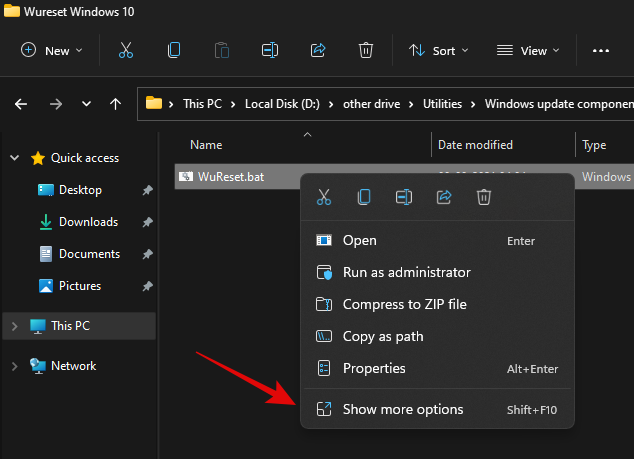
Select ‘Rename’.
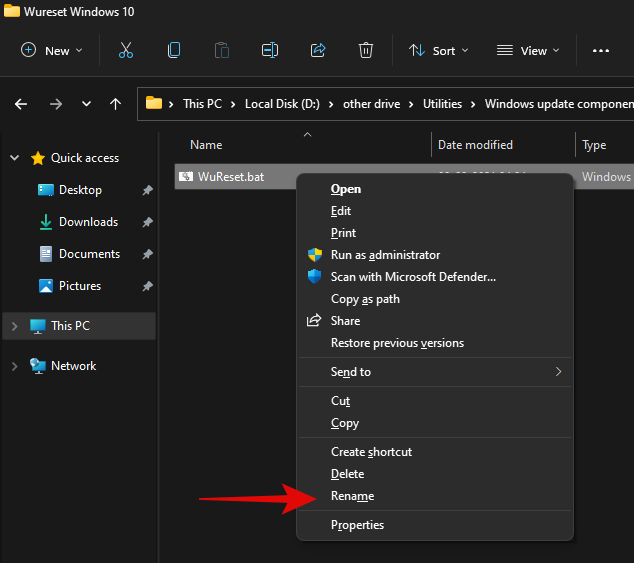
Replace ‘.bat’ with ‘.txt’.
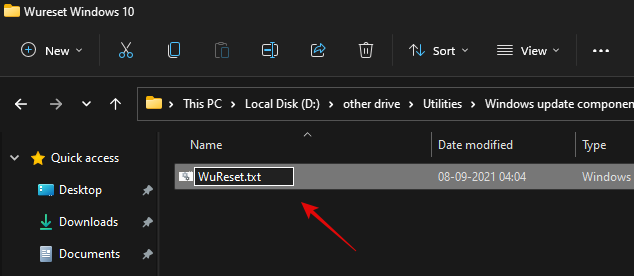
Click on ‘Yes’ to confirm your choice.

Now double click and open the file and it should open in your notepad. Once opened, scroll to the ‘:Reset’ section for resetting network commands and add the following line after the first delete command as shown below.
del /s /q /f "%SYSTEMROOT%\Logs\WindowsUpdate\*"

Once added, hit Ctrl + S on your keyboard. Ensure that there are no formatting changes or spaces before or after the line. The file will now be saved on your system along with its recent changes. We will now add some code to Reset Windows’s update policies on your system. Copy the lines below and paste them after your system commands. Ensure that two empty lines are available at either end of the code as shown below.
:: Windows Update policies resetting
reg delete "HKCU\SOFTWARE\Policies\Microsoft\Windows\WindowsUpdate" /f
reg delete "HKCU\SOFTWARE\Microsoft\Windows\CurrentVersion\Policies\WindowsUpdate" /f
reg delete "HKLM\SOFTWARE\Policies\Microsoft\Windows\WindowsUpdate" /f
reg delete "HKLM\SOFTWARE\Microsoft\Windows\CurrentVersion\Policies\WindowsUpdate" /f
gpupdate /force
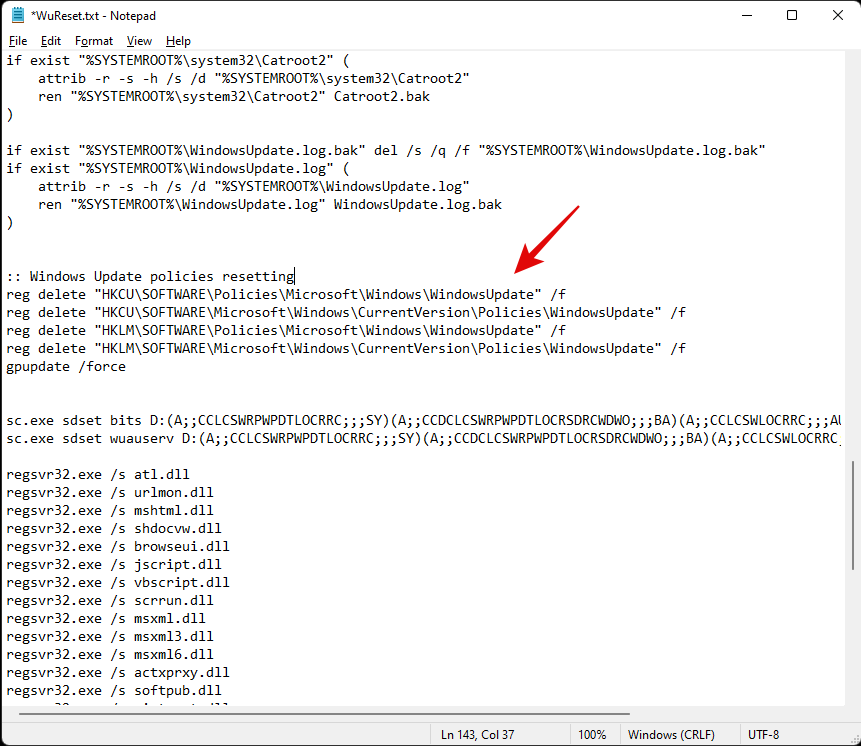
Lastly, let’s add some lines to ensure that the startup type for this service is set to ‘Automatic’. Copy the code below and add the lines after your winsock reset commands but before your service starting commands as shown below. Copy and paste the code in its respective location.
:: Set the startup type as automatic
sc config wuauserv start= auto
sc config bits start= auto
sc config DcomLaunch start= auto
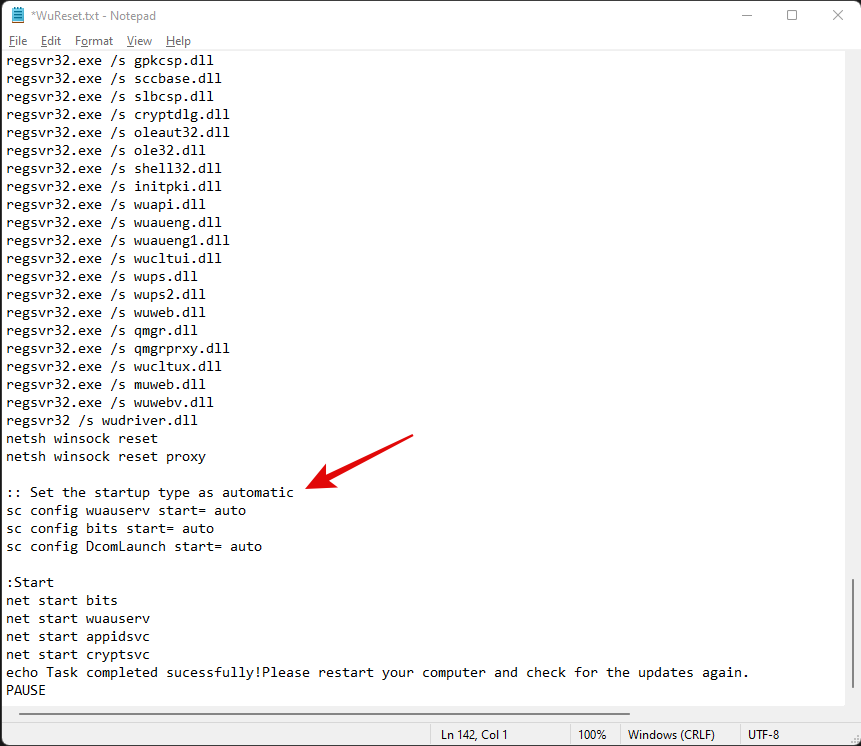
Once you are done, hit Ctrl + S on your keyboard to save your changes. Close the file and right-click on it again and select ‘Show more options’.

Click on ‘Rename’.
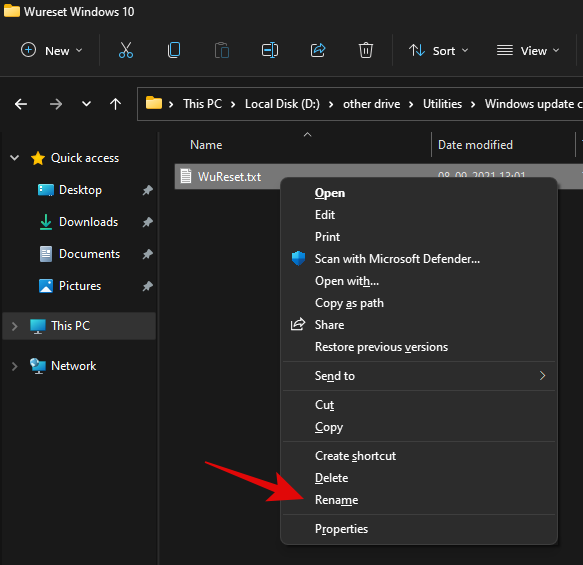
Replace ‘.txt’ with ‘.bat’.
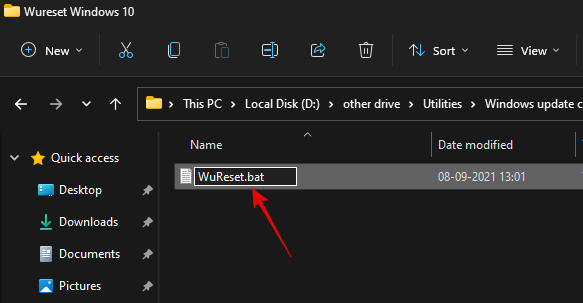
Once done, right-click on the file and select ‘Run as administrator’.
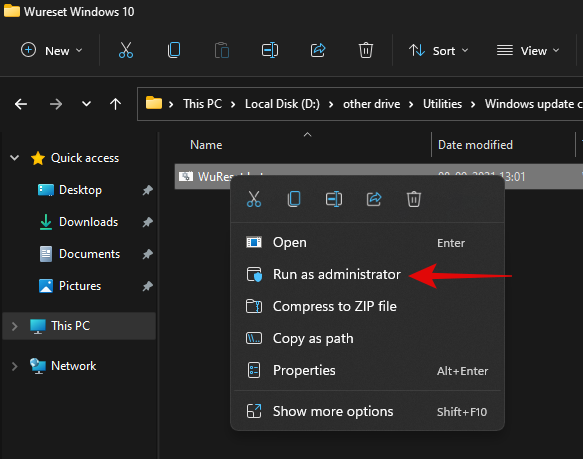
The batch script will now run on your PC and do its thing. Once the process completes, you will be asked to restart your PC. We highly recommend that you restart your PC at the earliest after running this script. Upon a restart, your Windows update should be reset and a fresh start should help you easily install pending Windows updates on your PC.
Method #02: Use DISM to uninstall the concerned packages
If you are still unable to uninstall specific Windows Update packages then simply use the DISM method to remove the concerned updates from your PC. This method force removes any available Windows updates from your PC without any issue. You will get a list of all the available updates in a table format which should make it much easier for you to find the culprit on your PC. Simply follow the guide at the top to get you started.
Method #03: Run SFC & DISM commands
At this point, if Windows still fails to update your system then you are facing a more serious issue than we anticipated earlier. This could indicate system-level corruption of files or missing system files from your system. In such cases, you can run SFC and DISM checks to fix corrupted files as well as restore missing system files. Follow the guide below to get you started.
Press Windows + S on your keyboard and search for CMD. Click on ‘Run as administrator’ once it shows up in your search results.

Type in the following command and press Enter on your PC.
sfc /scannow
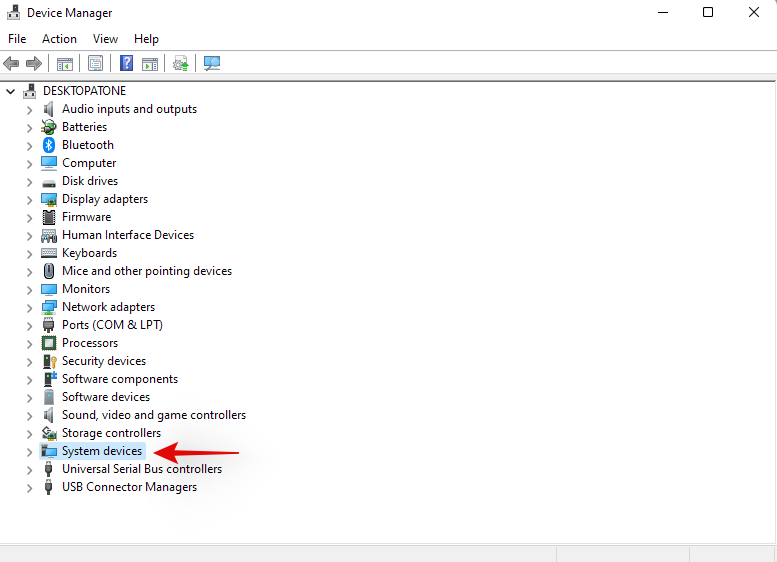
Once the SFC scan completes, type in the following command and execute it.
DISM /Online /Cleanup-Image /RestoreHealth
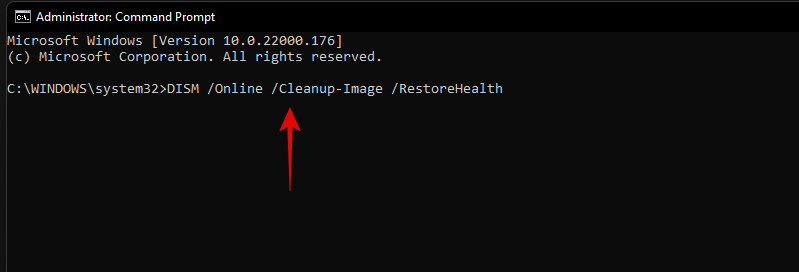
We recommend you restart your PC once the process completes.
Method #04: Last resort: Reset your PC
If nothing seems to be working for you then it might be time for a fresh installation of Windows 11 on your system. You can try getting in touch with your support team as well but if nothing works then a reset of your PC is the best option. In most cases, a reset while keeping your local files should help get Windows update working on your system.
Windows 11 connects to the update servers and updates your security definitions and drivers during OOBE. Windows will fix all update issues and reinstall necessary services on your system to get Windows update back up and running on your system during this process.
► You can use this dedicated guide from us to reset your Windows 11 PC.
We hope you were able to easily uninstall updates from your Windows 11 PC using the guide above. If you face any issues, feel free to drop a comment below.
Related:
Löschen Sie die App-Download-Historie auf Google Play für einen Neuanfang. Hier sind die schrittweisen Anleitungen für Anfänger.
Räumen Sie das Durcheinander ungenutzter Spotify-Wiedergabelisten auf und erfahren Sie, wie Sie sie löschen können. Lernen Sie die neuesten Methoden, um Ihre Spotify-Bibliothek zu optimieren.
Fast jeder andere PC-Hersteller scheint eine Vorliebe für McAfee-Systemschutzsoftware zu haben und weigert sich vehement, seinen PC ohne diese auszuliefern. Aber viele Leute mögen McAfee nicht besonders…
Festplattenspeicher war schon immer ein Luxus, sei es in den alten Tagen von DOS, in denen alles auf einer Diskette gespeichert wurde, oder in unserer modernen Zeit, in der es schwierig ist, unsere Musikbibliotheken auf einem einzigen Dr…
Microsoft Teams ist ein großartiges Kollaborationstool für Teams und Mitglieder, die remote an einem Projekt zusammenarbeiten. Es gibt Ihnen die Möglichkeit, nahtlos miteinander zu kommunizieren, Dateien zu teilen,…
Microsoft Teams ist eines der beliebtesten Tools, mit dem Teams von zu Hause aus zusammenarbeiten können. Sie können über Direkt- und Gruppennachrichten, Videokonferenzen mit Ihren Teammitgliedern kommunizieren und Dateien mit anderen teilen…
Im Gegensatz zu Zoom und Google Meet folgt Microsoft Teams einem gewissen Anstand, wenn es um die Einrichtung Ihres Arbeitsplatzes geht. Es ermöglicht Ihnen, mehrere Organisationen von der Anwendung aus zu verwalten und…
Wenn Sie auf Fehler oder Abstürze stoßen, befolgen Sie die Schritte zur Systemwiederherstellung in Windows 11, um Ihr Gerät auf eine frühere Version zurückzusetzen.
Erfahren Sie, ob es möglich ist, eine vertikale Taskleiste in Windows 11 einzurichten und wie Sie die Taskleiste auf Ihrem Windows 11-Gerät anpassen können.
Wenn Sie nach den besten Alternativen zu Microsoft Office suchen, finden Sie hier 6 hervorragende Lösungen, um loszulegen.
Dieses Tutorial zeigt Ihnen, wie Sie ein Windows-Desktop-Symbol erstellen, das eine Eingabeaufforderung zu einem bestimmten Ordnerstandort öffnet.
Ist Start11 besser als die Windows Taskleiste? Hier sind einige der wichtigsten Vorteile, die Start11 gegenüber der integrierten Leiste von Windows hat.
Entdecken Sie mehrere Möglichkeiten, ein beschädigtes Windows-Update zu beheben, wenn Ihr Gerät nach der Installation eines aktuellen Updates Probleme hat.
Kämpfen Sie damit, herauszufinden, wie man ein Video als Bildschirmschoner in Windows 11 einrichtet? Wir zeigen Ihnen, wie Sie mit einer kostenlosen Software vorgehen, die für mehrere Videoformattypen geeignet ist.
Haben Sie sich über die Erzählerfunktion in Windows 11 geärgert? Erfahren Sie, wie Sie die Erzählerstimme auf einfache Weise deaktivieren können.
Möchten Sie den Löschbestätigungsdialog auf Ihrem Windows 11 PC deaktivieren? Lesen Sie diesen Artikel, der verschiedene Methoden erklärt.
Das Verwalten mehrerer E-Mail-Postfächer kann mühsam sein, insbesondere wenn wichtige E-Mails in beiden landen. Dieses Problem haben viele Menschen, die in der Vergangenheit Microsoft Outlook und Gmail-Konten eröffnet haben. Befolgen Sie diese einfachen Schritte, um Microsoft Outlook mit Gmail auf PC- und Apple Mac-Geräten zu synchronisieren.

![So deinstallieren Sie McAfee unter Windows 11 [5 Möglichkeiten] So deinstallieren Sie McAfee unter Windows 11 [5 Möglichkeiten]](https://cloudo3.com/resources8/images31/image-4917-0105182719945.png)




